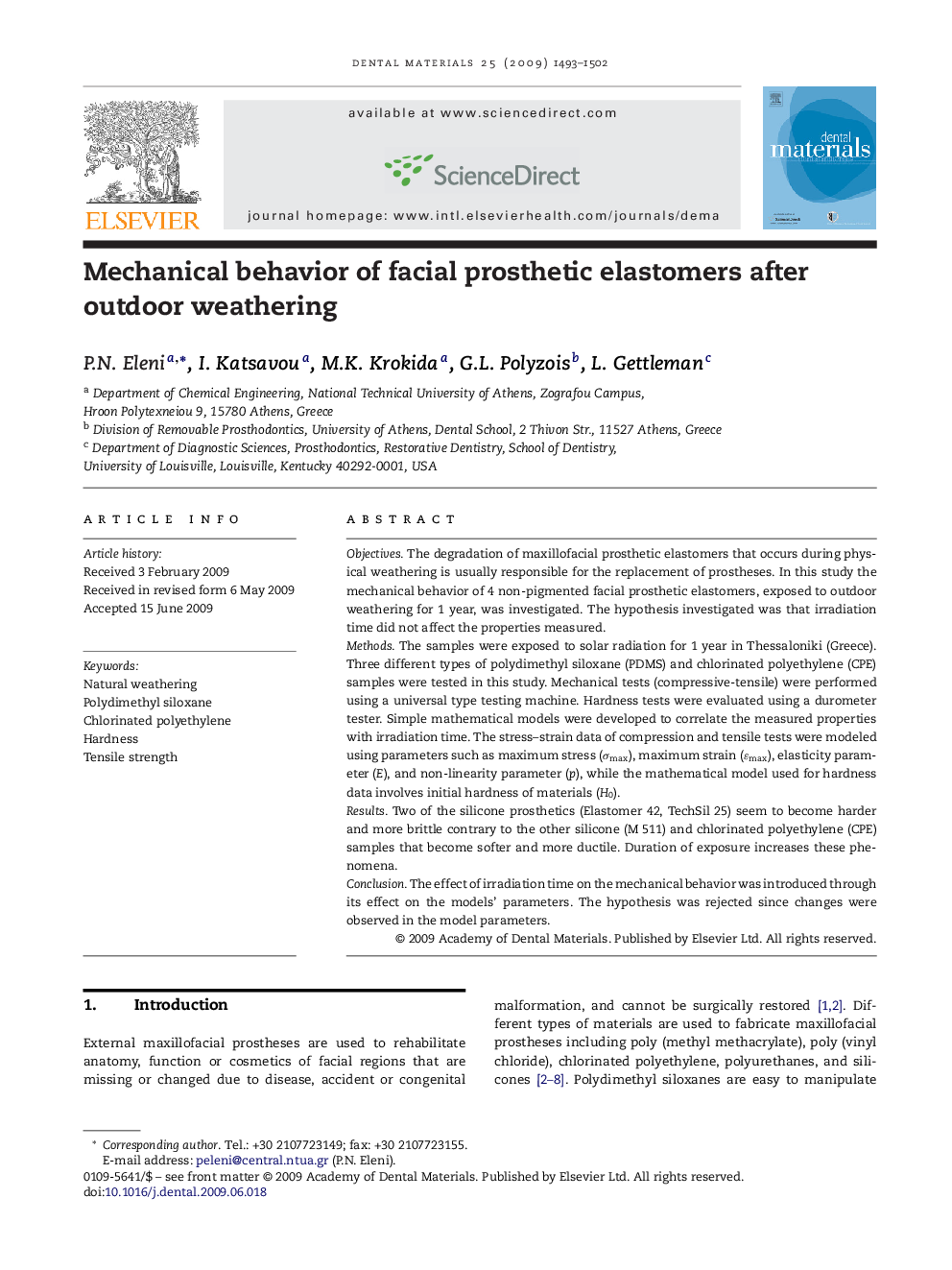| Article ID | Journal | Published Year | Pages | File Type |
|---|---|---|---|---|
| 1421958 | Dental Materials | 2009 | 10 Pages |
ObjectivesThe degradation of maxillofacial prosthetic elastomers that occurs during physical weathering is usually responsible for the replacement of prostheses. In this study the mechanical behavior of 4 non-pigmented facial prosthetic elastomers, exposed to outdoor weathering for 1 year, was investigated. The hypothesis investigated was that irradiation time did not affect the properties measured.MethodsThe samples were exposed to solar radiation for 1 year in Thessaloniki (Greece). Three different types of polydimethyl siloxane (PDMS) and chlorinated polyethylene (CPE) samples were tested in this study. Mechanical tests (compressive-tensile) were performed using a universal type testing machine. Hardness tests were evaluated using a durometer tester. Simple mathematical models were developed to correlate the measured properties with irradiation time. The stress–strain data of compression and tensile tests were modeled using parameters such as maximum stress (σmax), maximum strain (ɛmax), elasticity parameter (E), and non-linearity parameter (p), while the mathematical model used for hardness data involves initial hardness of materials (H0).ResultsTwo of the silicone prosthetics (Elastomer 42, TechSil 25) seem to become harder and more brittle contrary to the other silicone (M 511) and chlorinated polyethylene (CPE) samples that become softer and more ductile. Duration of exposure increases these phenomena.ConclusionThe effect of irradiation time on the mechanical behavior was introduced through its effect on the models’ parameters. The hypothesis was rejected since changes were observed in the model parameters.
